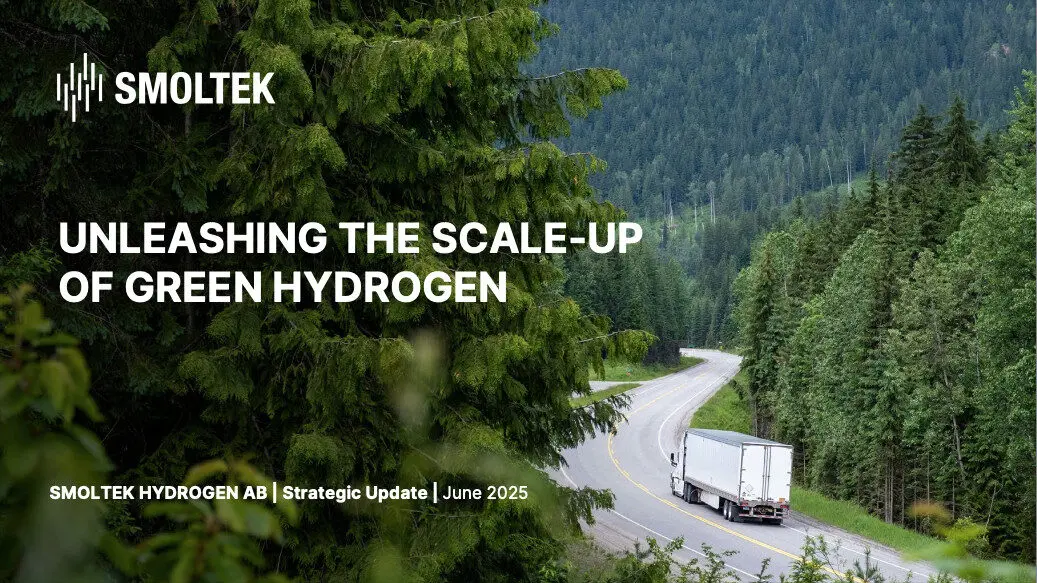Sign up for our newsletter!
Your data will be handled in compliance with our privacy policy.
Your data will be handled in compliance with our privacy policy.

Smoltek has achieved proof-of-concept for high-performing, nanofiber-based cell material for PEM-electrolyzers. In our laboratory we have demonstrated that the cell material fulfills several important performance and durability requirements, including very low contact resistance, which potential industrial partners have stated that they want to test before a collaboration regarding the continued development can be initiated.
Smoltek’s R&D‑team has carried out solid and determined work in order to achieve proof-of-concept of Smoltek’s nanofiber-based cell material for electrolyzers. This also constitutes a further confirmation of the opportunities with our patent protected technology platform for controlled nanofiber growth. The technology has substantial potential to be used to contribute to a new generation of PEM (Proton Exchange Membrane) electrolyzers, where either surface efficiency (higher current density) or reduced need of costly iridium-based catalyst are in focus.
“We have now shown that our cell material is an excellent carrier for the catalyst particles used in PEM electrolyzers, and some of these results have already been presented to potential industrial partners in the form of large international manufacturers in the electrolyzer field. Our material works as an interface layer with very low contact resistance for catalytic nanoparticles, for both electrons and hydrogen ions, and this is exactly what is in-demand in this segment,” says Fabian Wenger, Technology Lead at Smoltek Innovation.
The properties of the cell material also makes it suitable for other related applications, including fuel cells.
“Our material constitutes a possible solution which can be applied broadly in the field of electrochemical cells. This includes fuel cells, which are expected to play an important role in the coming years for heavy transports. Water electrolyzers on the other hand are key for producing green hydrogen gas that allows energy-intensive industries, like steel production, to become fossil free. Just looking at our home market Sweden, we are noticing very large investments in green steel production,” says Ellinor Ehrnberg, President of the group company Smoltek Innovation, which is responsible for the development of the cell material.
Smoltek is conducting discussions with potential industrial partners ahead of the continued development of the cell material. At the same time, the development team is working to create a suitable anti-corrosion coating. This is required to make sure that the material is not damaged by the aggressive environment on the anode side of the PEM electrolyzer.
Image: Amin, Henri, Qi, Simin and Elisa – parts of Smoltek R&D‑team
Your data will be handled in compliance with our privacy policy.
News

November 20, 2025
We have launched a podcast about materials technology and investments in general and our disruptive carbon nanotechnology in particular.
News

November 4, 2025
Smoltek Hydrogen has received an order for samples of low iridium-load Porous Transport Electrodes (PTE) for PEM electrolyzers. The electrodes will be used in a joint development project with Heraeus Precious Metals, a global leader in precious metals.
News

October 30, 2025
Smoltek Hydrogen recently participated in the Hydrogen Technology World Expo 2025 in Hamburg, Germany – the world’s largest industry event for innovation in hydrogen and electrolysis technology. Ellinor Ehrnberg, President of Smoltek Hydrogen, was invited to a panel discussion on the topic “Overcoming the Key Obstacles in Electrolyzer Expansion”
News

June 12, 2025
Smoltek Hydrogen is developing Smoltek PTE – a proprietary porous transport electrode based on carbon nanostructures, which is intended to meet the requirements of next-generation PEM electrolyzers for the production of fossil-free hydrogen.
News

May 20, 2025
Smoltek has been awarded a new patent within the hydrogen business area. The patent discloses a method for depositing conformally coated catalyst support for the PTL (porous transport layer) that provides both high catalytic activity and additional corrosion protection.